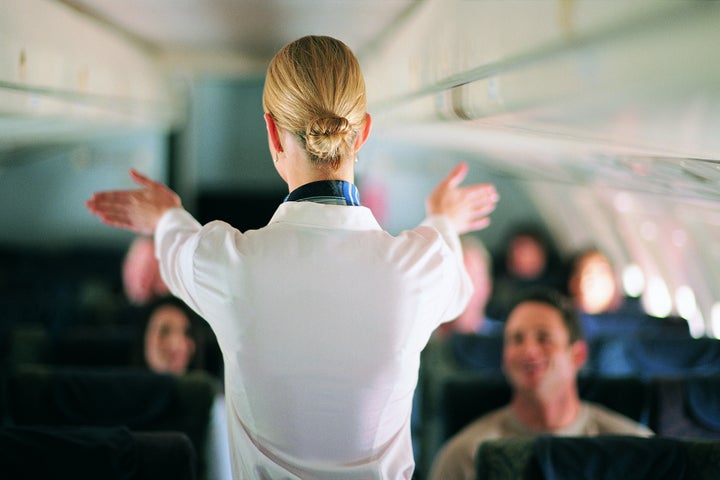From shows like “Pan Am” and “The Flight Attendant” to the many popular influencers who work in the skies, the job of flight attendant certainly captures the public imagination. But along with that allure comes a long list of myths about what the job really entails.
“There’s something about the sky that carries a kind of mystic appeal, so it’s no surprise that unconventional jobs above the clouds come wrapped in myths and misconceptions, particularly from those watching from the ground,” Jay Robert, a senior flight attendant and the founder of A Fly Guy Travels, told HuffPost. “Some of those myths make us laugh, while others are just plain insulting to the role we play in keeping millions of travelers safe and sound, often at the expense of our health and well-being.”
From assumptions about glamorous layovers to the persistent idea that flight attendants are simply “waitresses in the sky,” here’s a look at the most common misconceptions about the profession ― and what flight attendants want you to know instead.
Myth: Their main role is food and drink service.
When travelers think of flight attendants, they often picture drink carts and snack service. But those who work the aisles say that perception barely scratches the surface of their actual responsibilities.
“It’s a myth that the primary role of flight attendants is to serve drinks and snacks to customers during the flights,” Delta Air Lines flight attendant Terri Baker said. “In reality, flight attendants are trained safety professionals.”
She emphasized that the job involves ensuring passenger safety, managing emergencies and enforcing aviation regulations.
James Lauritz via Getty Images
“We’re trained in emergency evacuations, CPR, firefighting, de-escalation and even childbirth,” said Paula Adams, who used to work for Etihad Airways but is now a private flight attendant and aviation and business trainer. “If something goes wrong at 40,000 feet, we’re your first responders. Coffee and pretzels are just the tip of the service iceberg.”
That safety-first focus begins long before passengers step on board.
“Since passengers mainly see what happens in the cabin, it’s understandable that they associate our role primarily with service, because that’s the most visible part of what we do,” Robert said. “But like any good production, the real work happens behind the curtain, setting the stage…
Click Here to Read the Full Original Article at Travel…
